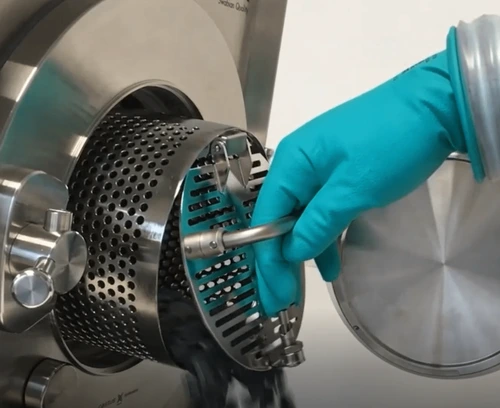
Continuous manufacturing—also known as continuous flow chemistry—is slowly becoming the preferred process for pharmaceutical solution providers. Batch manufacturing has long been the norm for API production, but there are many advantages of continuous manufacturing that are now being recognized. Among them is the ability to tailor output to demand by changing the run time as opposed to being fixed to a specific quantity. Also, there is no scale-up from development batches to production batches. Other advantages include the ability to increase output by increasing run rate, scaling “out” (through multiple identical lines), or scaling up by switching to a larger processor. In terms of resourcefulness, the continuous manufacturing process uses material sparingly which is critical in developmental stages when API quantities are low. The list goes on, with a reduced need for regulatory oversight, smaller space requirements that could mean portable facilities, and green-lighting the use of more hazardous chemistries which means higher yields and purities.
It has taken more than 25 years for continuous manufacturing to establish itself in the pharmaceutical manufacturing industry, which is inherently conservative in terms of the approval of manufacturing processes. Another reason is there exists no shared agreement among manufacturers about the benefits of continuous manufacturing and that the process is designed solely for high volume production. Then there are the incongruent global regulation requirements, the lack of efficiency paired with on-and-off short runs, and simply a general uncertainty around continuous manufacturing that has halted its integration. Nonetheless, it is becoming more clear across the entire industry that continuous manufacturing is cleaner, more flexible and even more efficient than other standard manufacturing practices.
While it’s predicted that the industry will adopt continuous manufacturing at an increased rate as manufacturers become more comfortable with its benefits and regulations, there are still a number of challenges to overcome before the practice can be fully integrated into the general manufacturing process. For one, there is such a thing as a “batch mentality”, ingrained from decades of legal requirements expressed in batch size. Other issues are more easily identified such as the limits to a number of ingredients where batch manufacturing is unlimited but the number of feeders in continuous manufacturing is often no more than six.
Moreover, pharmaceutical manufacturing environments are unique with unique attendant considerations. For example, the industry is heavily reliant on compliance and therefore tends to inhibit innovation. Switching to continuous manufacturing from batch manufacturing isn’t as efficient due to intermittent short runs, so companies are forced to start with one or the other. And in terms of the impact excipient suppliers can have on continuous manufacturing processes, it’s difficult to generalize. A potential critical material attribute may not be included in the supplier specification, and general purpose excipients may be ideal for some applications but less so for any one product. This could require extensive testing but testing is both time-consuming and taxing on labor resources.
Despite the complexities of adopting continuous manufacturing practices one of the major proponents for evolving into its integration is in how it can help address the pressures on the API supply chaing due to the COVID-19 crisis. There is an overdependence of the United States on China and India to meet its API demand, but with the number of infected cases in the US surpassing that of China, the focus has shifted to finding technological solutions. Many believe that continuous manufacturing could help American pharmaceutical companies gain ground against China and other countries.
Graver understands that API production requires several critical steps in producing high quality pharmaceuticals and intermediates, and we offer our Ecosorb® multi-functional adsorbents with excellent filtration characteristics to assist these processes.
Need help?
You can find the right application or product using our Tool, or through our Chat Bot.
Keep In Touch
Keep up to date with our latest news and announcements. Unsubscribe anytime.




.svg)
.svg)



